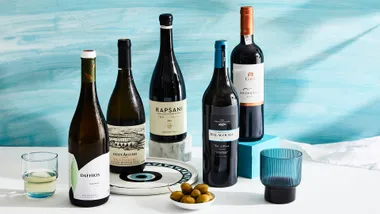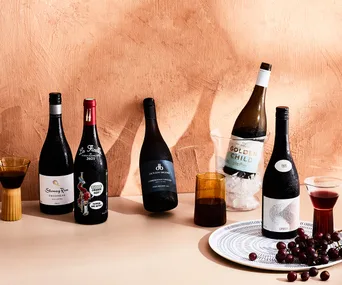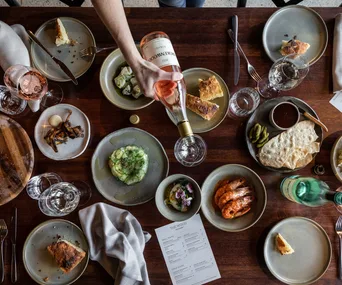As the late Kingsley Amis – Martin’s dad – once declared, “Drink is a contentious subject.” Take the world of cocktails, ever torn by unresolved controversies that may appear minor to the outsider but are of paramount importance to serious drinkers.
“I have seen grown men close to blows over whether you should or should not bruise the mint in a Mint Julep.” Amis speaking again.
There are the classicists, such as British food and wine writer and broadcaster Matthew Fort, who says, “Am I alone in finding that the modern habit of tinkering around with classic cocktails is pernicious? Heaven knows, it’s hard enough to find the original made properly before you start messing about. Classics are classics for a very good reason. Leave well alone.”
And then there are the avant-gardists, keen to push cocktail creativity to the limit. Like the mostly Milanese mixologists who have got Italian booze buffs smacking their lips recently with their cocktail
salati: salty cocktails flavoured with pickles, molluscs, crustaceans, plain salt, salts aromatised with dehydrated, crushed herbs, even seawater.
How did it start?
The phenomenon exploded earlier this year with a barrage of publicity in the media, and at traditional springtime food and wine and beverage events such as Vinitaly in Verona and Identità Golose in Milan. The latter’s cocktail connoisseur Luigi Barberis went so far as to say that, “After decades of darkness, a veritable mixology revolution is under way.”
Call me naïve but I couldn’t fathom it at first. As the summer approached I was having surreal nightmares of imbibing brine on the beach, of sipping seawater by the seashore. Surely there was no way
a salty drink could be thirst-quenching, surely an ice-cold lager was a better option. (Though as chance would have it, the newly revived Sicilian brewery, Birra Messina, is now marketing a pale ale flavoured with Trapani sea-salt crystals.) Coleridge’s Rime of the Ancient Mariner came to mind: “Water, water everywhere, nor any drop to drink.”
Apparently I was missing the point – picking up the wrong end of the cocktail stick as it were. It was the award-winning bartender Mattia Pastori who put me right. “The function of salt in a cocktail is
as a taste enhancer,” he explained. “Its job is to accelerate our perception of flavours, hence to increase their intensity.”
Born in Pavia, where he learned the ropes in his family’s bar, Pastori picked up experience in the UK before establishing himself as one of the star players on the Milan mixology scene, working at the bars of five-star hotels such as the Park Hyatt, the Armani and the Mandarin Oriental.
So what does he think of the new salty cocktail craze? He immediately corrects me in my choice of words.
“I wouldn’t speak so much of a craze as a desire to explore new frontiers,” he says. “Many bartenders are using savoury ingredients in new creations, partly to meet the demand of a drinking public increasingly curious to try out unusual, sometimes unbelievable flavours.”
He explains how a touch of saltiness lifts a spirit’s aromatic notes. “If I add a few drops of salt and water solution to a G&T, you won’t perceive its flavour but you will have an amplified perception of the bouquet of the gin.”
What does this mean for the cocktail world?
Ultimately, unlike Barberis, Pastori reckons the salty trend has stirred but not shaken the Italian mixology world. It’s more an evolution than a revolution. “Take classic cocktails. You’ll find that savoury ingredients are already in the DNA of a number of recipes. The Spritz, for example, was originally served with olives in brine.”
The same is true, of course, of the Martini, a cocktail Pastori has reinterpreted with a savoury twist. In his Oasi Martini, created for the drink list of Armani Café, he blends one part passito wine in which brined olives have been infused with three parts gin. The effect is one of palate-numbing dryness attenuated by a deliciously mellow aftertaste.
Another of Pastori’s takes on an old favourite is the Champagne Mary, also created for the Armani Café, a Champagne Cocktail flavoured with a blend of crushed tomatoes and a “shrub” (a 17th-century word for a medicinal syrup) of cider vinegar, thyme and sugar.
Besides revisiting the great classics, Pastori also mixes and matches them. “One of my most successful experiments is the Cosmo Maria, an original synthesis of the Bloody Mary and the Cosmopolitan created for a bar in Pozzuoli, north of Naples,” he says. “It consists of tomato juice, cranberry juice, vodka and lemon mixed with teriyaki sauce to add a salty kick.”
If Pastori’s creations explore the possibilities of the saline and the savoury, those of other exponents of the new wave are inspired more explicitly by the sea and marine life. At the Novantiqua bar in Bordighera, near the French border, bartender Daniel Roudaut has come up with the Rob Royster, in which diverse flavours – three types of whiskey (rye, single Islay malt, bourbon) and sour cherry red vermouth – are accentuated by the water from an oyster shell (the shucked mollusc itself is used to garnish the glass).
The move towards savoury is closely bound up with the tendency of a growing number of restaurants to serve dinner with cocktails, with chefs and bartenders working in tandem. At the Milanese concept restaurant Bioesserì, Federico Della Vecchia in the kitchen and Domenico Cosentino at the counter have made a name for themselves with their edible cocktail, the fishy Coral Bay. To prepare it, they use a mixture of fresh coriander, marinated onion, lime syrup, pepper, orange and lemon zest and kombu algae infused in mezcal as a marinade liquid for an amberjack carpaccio. After which they filter the liquid, shake it and serve it in a glass garnished with the onion and the amberjack itself.
I recently came across an article about cocktails in a 1933 issue of the magazine La Cucina Italiana. In those days, when fascism was at its height, the practice of mixing drinks was evidently viewed with open hostility by gourmets. “It is really disgusting to see some individuals drinking a cocktail before meals,” says the writer. How would he react today, now that “some individuals” are mixing the cocktail with the meal?
 Rob Shaw
Rob Shaw









